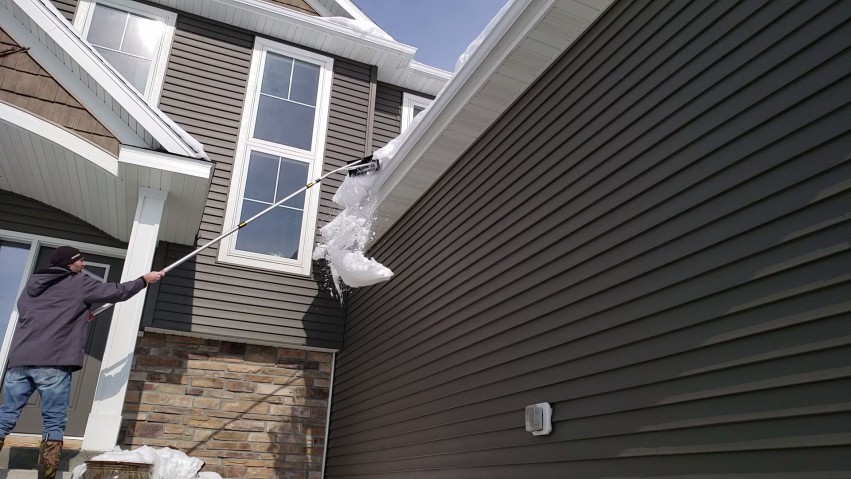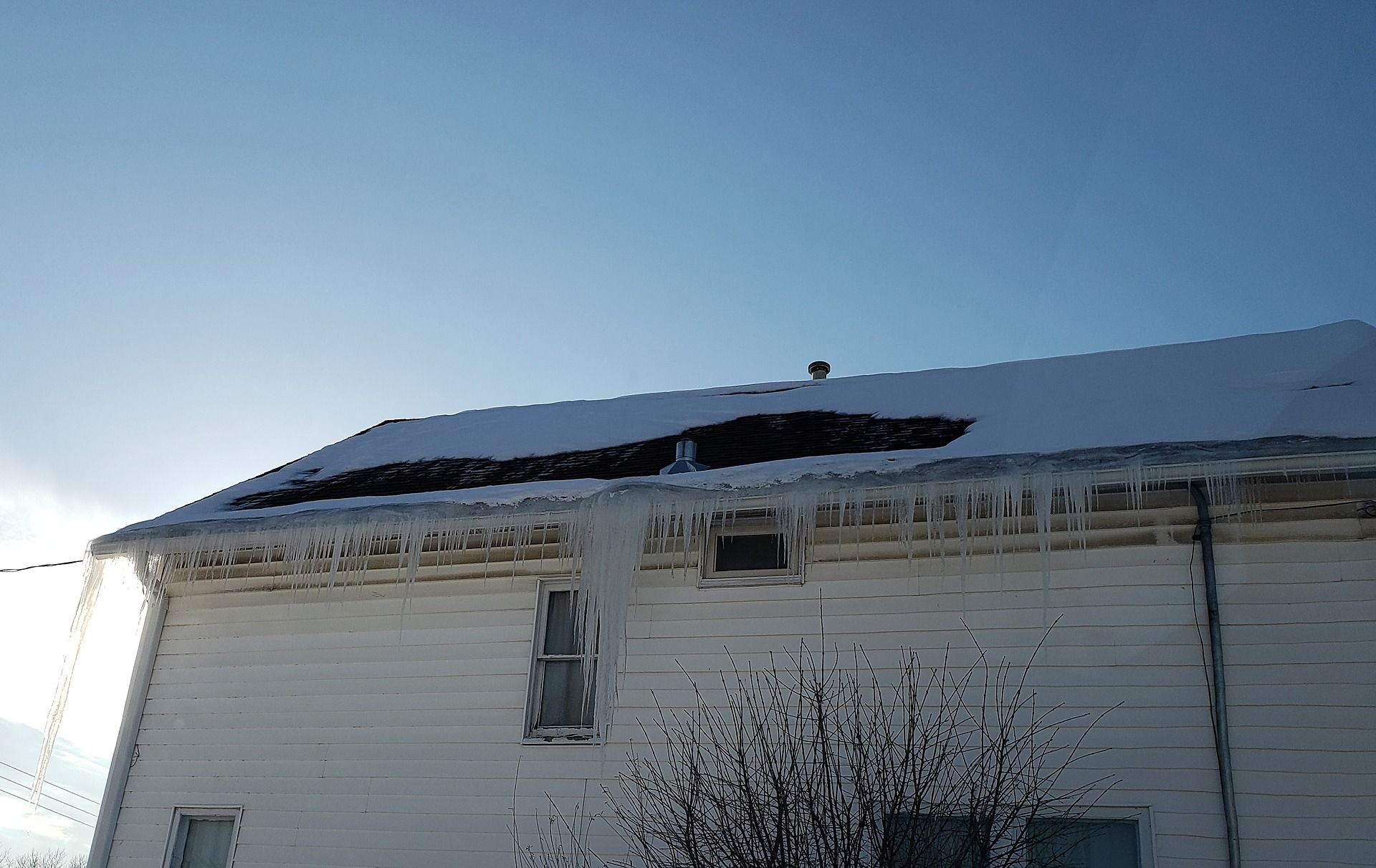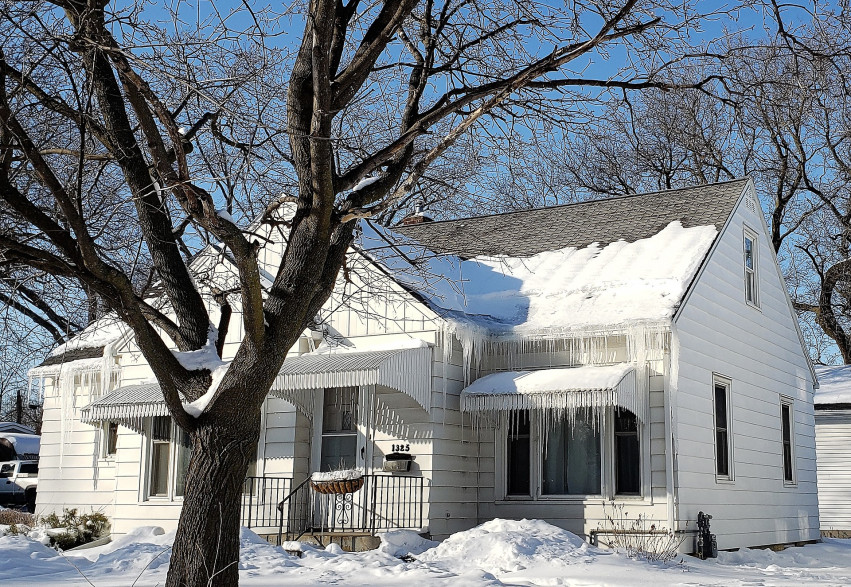How to Prevent Ice Dams Tips for Homeowners
What Are Ice Dams? When Do They Occur?
Ice dams likely occur after a huge snow fall, shortly after a warm up comes and causes that snow to melt quickly. When the snow thaws on a roof the water starts draining down and filling the gutters and typically begin's to freeze up, which the ice continues to back up. This likely start from old leaves that weren’t removed before the snowfall or simply a large volume of water coming all at once and hitting the ice that has yet to melt. The water may freeze into larger chunks and continue to due so turning the ice into what we call ice dams.
This is where the damage quickly sets in! Water might drip past the dam, creating huge icicles that can reach several feet in length before they break. Those, are a hazard all by it's self, but it’s what happens behind the ice dam that’s far more concerning.
When water backs up behind the dam, it can start to leak back into your home, damaging the shingles, roof and eventually seeping into the walls & ceiling. Its not uncommon to go unnoticed, because it’s hidden.

Homeowner Tips
As the cold months set in, homeowners in Rochester MN are wondering how to prevent frustrating ice dams and more importantly how to get rid of them once they appear. Below are some tips & info you can use to help keep your home safer from ice dams and all the damage can they cause.
How Can We Prevent Ice Dams?
"Although painful & time-consuming" homeowners with lower roofs consider running a roof rake over the top of your roof after heavy snowfalls. These roof rakes generally come on a telescoping pole and are sold at home improvement stores. Keep in-mind they go fast during the winter months with heavy snow, so stock up early maybe ask a neighbor or favorite real estate agent if they might already have one you can borrow. Keep in-mind with the amount of force applied these roof rakes tend to break easily. If all that sound like too much there are pro's out there that will focus on the removal on snow on roofs.
You might want to re-insulate your roof some more. The best ways to prevent ice dams is to not let your roof get too warm/ keep your roof cold so that the snow doesn’t melt rapidly. If this happens it starts to create damage by building up ice as it thaws and refreezes. (Tip) Check your attic for insulation gaps & leaks, if you have a attic access with a poor seal to the attic seal that up properly.

Look for "Hot Spots" on the Roof
If the sun doesn't hit your roof or there has been much of a warm up & you've see isolated spots on a roof that have melted snow you could be missing some insulation or heat might be escaping from a bathroom vent. If heat is escaping to the roof its causing snow to melt and accumulate ice as it re-freeze on & above the gutters. The picture here is to help give you a visual for what a hot spot might look like.
.jpg?w=851)
Why do ice dams happen when the temperatures aren’t warm enough to melt the snow on my roof?
Sometimes, homeowners may notice ice dams forming even if the weather has been consistently cold with out a warm up. In that case, it’s important to consider that your home may have gaps in the insulation, which are allowing warm air to seep out. The warm draft leaking into the attic acts the same as a warm up weather pattern would heating up the snow to melt with the snow rapidly freezing and causes buildup as it drains down to refreeze.
.jpg?w=851)
What can I do to fix ice dams and their damage if they do form on my roof?
Even with all the strategies listed above they aren’t fool proof. It may be an unexpected warm weather blast that causes your ice dams to form and water to leak back into the house and unfortunately there’s not much can do to keep it from happening.
If an ice dam forms, it’s best to call the pro's. WCCO broadcasted a segment detailing how specialists remove and prevent future ice dams even in the middle of the winter by some of the following technics:
- Heating the roof with 300-degree steam that causes all the snow and ice dam to melt away.
- Laying down commercial-grade heat tape to prevent ice dams from building up again.
- Inspecting top floor and attic areas for insulation and ventilation problems and making recommended fixes.
.jpg?w=851)
Top takeaways on Ice Dam Prevention and Removal
Homeowners should be on the lookout for three key indicators of ice dams this winter:
- Take care of your roof before warm weather after a heavy snowfalls.
- Find "Hot spots" areas where snow has melted on the roof.
- Find the accumulation of icicles, which can be an early indicator of an ice dam that may soon cause interior home damage.
- When in doubt, call the pro's to inspect your roof and attic for damage and recommend potential short- and long-term fixes.





